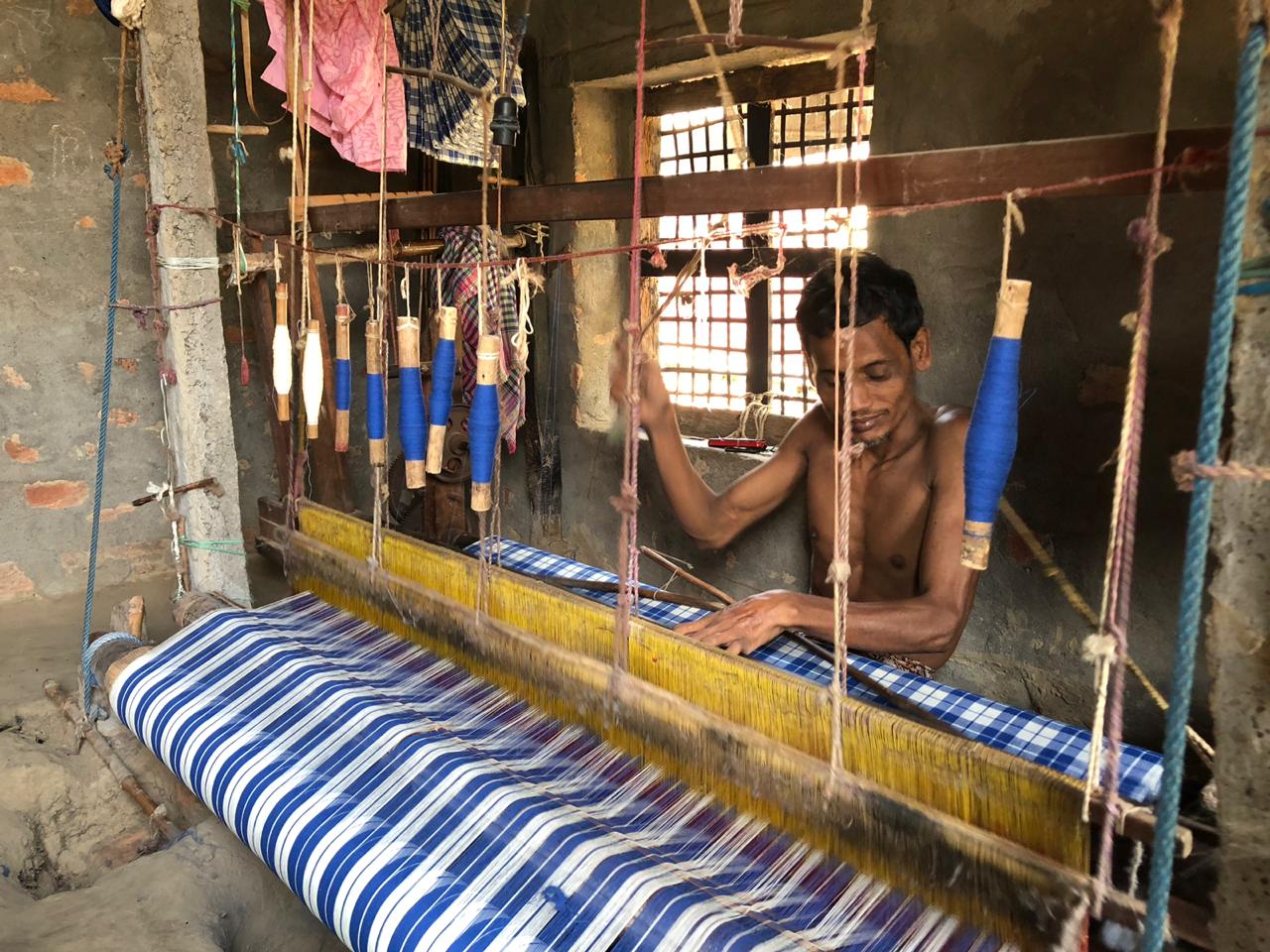As more of us become aware of the impact fast fashion has on the environment, the search for sustainable alternatives has never been more important. One fabric that’s making waves in the eco-conscious slow fashion world is khadi cotton. Traditionally handwoven and rooted in India’s history, khadi is the perfect blend of sustainability, comfort, and style. It’s especially gaining popularity in outerwear, where its natural properties make it ideal for both fashion and functionality. In this post, we’ll explore why khadi cotton jackets are the perfect eco-friendly choice for a greener wardrobe.
1. What is Khadi Cotton?
Khadi is a handspun, handwoven fabric made from natural fibers like cotton, wool, or silk. Originating in India, khadi holds historical significance as it was championed by Mahatma Gandhi during India’s independence movement as a symbol of self-reliance. Today, it remains a testament to craftsmanship, sustainability, and ethical fashion.
2. Why Choose Khadi Cotton for Outerwear?
When it comes to outerwear, khadi cotton has several unique qualities that make it the ideal eco-friendly fabric.
a. Sustainability
Khadi cotton is an entirely sustainable fabric. Since it’s handwoven, the production process requires minimal energy and water, reducing its carbon footprint. Unlike machine-made fabrics, khadi’s manual production is more eco-friendly and supports local artisans, offering a more ethical alternative to fast fashion.
b. Breathability and Comfort
One of khadi’s most-loved features is its breathability. Unlike synthetic fabrics that trap heat and moisture, khadi allows your skin to breathe, keeping you comfortable throughout the day. Whether you’re wearing a lightweight khadi kimono jacket in the spring or layering it in the cooler months, you’ll feel fresh and cozy all day long.
c. Durability
Khadi is known for its long-lasting quality. The handwoven structure of the fabric makes it incredibly durable, meaning your khadi outerwear will stand the test of time, even with frequent wear. Investing in khadi cotton means less waste in the long run, as these pieces can last for years with proper care.
3. The Environmental Impact of Khadi Cotton
The fashion industry is one of the biggest polluters globally, but khadi cotton offers a solution that significantly reduces environmental harm. Here’s how:
a. Low Water Consumption
Conventional cotton farming is notorious for its excessive water use. However, the handwoven nature of khadi reduces the need for large-scale irrigation. Additionally, the hand-spinning process requires far less water compared to industrial methods, making it a much more water-efficient fabric.
b. Energy-Efficient Production
Most fabrics, especially synthetics, require energy-intensive production processes involving machinery and chemicals. Khadi cotton, on the other hand, is spun and woven by hand, eliminating the need for large machines and thus significantly cutting down on energy consumption. The result? A much lower carbon footprint per garment.
c. Biodegradable
Khadi cotton is made from 100% natural fibers, which means it’s completely biodegradable. Once its life cycle is over, a khadi garment won’t sit in a landfill for hundreds of years like synthetic clothing. Instead, it breaks down naturally, leaving a minimal impact on the environment.
4. The Versatility of Khadi Cotton Jackets
Khadi cotton is not only sustainable but also highly versatile. For example, quilted khadi jackets in a kimono style can be effortlessly styled in a variety of ways. Whether you’re looking for a relaxed, casual look or something a bit more polished, a khadi jacket can work for any occasion. Here are a few styling tips:
- Casual Chic: Pair your khadi kimono jacket with jeans and a simple top for a laid-back, everyday look.
- Office-Ready: Layer your jacket over a dress or tailored pants to create an eco-friendly, professional ensemble.
- Layering Piece: Khadi cotton jackets work beautifully as layering pieces, especially during transitional seasons like spring and fall.
5. Supporting Artisans and Ethical Fashion
By purchasing khadi cotton outerwear, you’re not just making a fashion statement—you’re supporting a centuries-old craft and empowering local artisans. Each piece is handwoven by skilled craftsmen, often in rural communities. This promotes fair trade practices and helps sustain traditional livelihoods. When you buy a khadi jacket, you are directly contributing to these communities while also making a conscious choice for the environment.
6. Caring for Your Khadi Cotton Outerwear
To make sure your khadi jackets last for years, it’s essential to take care of them properly. Khadi is a durable fabric, but a little TLC goes a long way in preserving its quality.
- Washing: We recommend “DRY CLEAN”
- Drying: Air dry in the shade to prevent the fabric from fading. Avoid direct sunlight.
- Storage: Store your khadi jackets in a cool, dry place to prevent any mold or mildew. Hanging them will help maintain their shape.
7. Conclusion: A Greener Wardrobe with Khadi Cotton Outerwear
Switching to khadi cotton outerwear is not just a style choice; it’s a conscious step towards a more sustainable and ethical wardrobe. With its eco-friendly production process, long-lasting quality, and timeless style, khadi cotton jackets are perfect for the modern woman who values both fashion and environmental responsibility.
If you’re looking to refresh your closet with greener options, explore our collection of handwoven, quilted khadi cotton jackets in kimono styles. You’ll not only elevate your wardrobe but also make a positive impact on the planet and artisan communities.
Shop our Khadi Cotton Collection Now and take the first step toward a greener, more ethical wardrobe!

